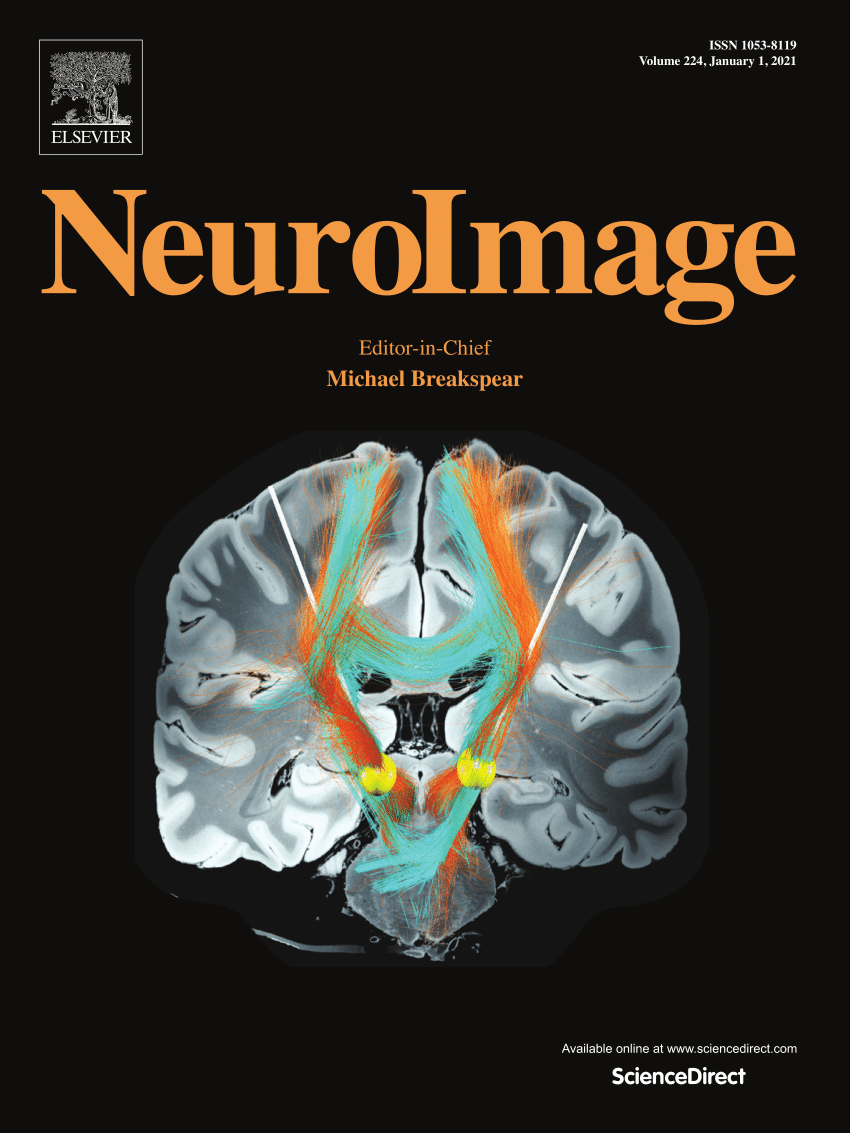Relationship between central autonomic effective connectivity and heart rate variability: A Resting-state fMRI dynamic causal modeling study
IF 4.7
2区 医学
Q1 NEUROIMAGING
引用次数: 0
Abstract
The central autonomic network (CAN) serves as a regulatory hub with top-down regulatory control and integration of bottom-up physiological feedback via the autonomic nervous system. Heart rate variability (HRV)—the time variance of the heart's beat-to-beat intervals—is an index of the CAN's affective and behavioral regulatory capacity. Although neural functional connectivities that are associated with HRV and CAN have been well studied, no published report to date has studied effective (directional) connectivities (EC) that are associated with HRV and CAN. Better understanding of neural EC in the brain has the potential to improve our understanding of how the CAN sub-regions regulate HRV. To begin to address this knowledge gap, we employed resting-state functional magnetic resonance imaging and dynamic causal modeling (DCM) with parametric empirical Bayes analyses in 34 healthy adults (19 females; mean age= 32.68 years [SD= 14.09], age range 18–68 years) to examine the bottom-up and top-down neural circuits associated with HRV. Throughout the whole brain, we identified 12 regions associated with HRV. DCM analyses revealed that the ECs from the right amygdala to the anterior cingulate cortex and to the ventrolateral prefrontal cortex had a negative linear relationship with HRV and a positive linear relationship with heart rate. These findings suggest that ECs from the amygdala to the prefrontal cortex may represent a neural circuit associated with regulation of cardiodynamics.
中枢自律神经有效连接与心率变异性之间的关系:静息态 fMRI 动态因果模型研究
中枢自律神经网络(CAN)是一个调节枢纽,通过自律神经系统进行自上而下的调节控制和自下而上的生理反馈整合。心率变异性(HRV)--心脏跳动间隔的时间差--是中枢自律神经网络情感和行为调节能力的一个指标。尽管与心率变异性和神经网络相关的神经功能连通性已得到深入研究,但迄今为止还没有任何公开报道对与心率变异性和神经网络相关的有效(定向)连通性(EC)进行过研究。更好地了解大脑中的神经连接性(EC)有可能提高我们对 CAN 亚区域如何调节心率变异的认识。为了着手解决这一知识空白,我们在 34 名健康成年人(19 名女性;平均年龄= 32.68 岁 [SD=14.09],年龄范围为 18-68 岁)中采用了静息态功能磁共振成像和动态因果建模(DCM)以及参数经验贝叶斯分析,以研究与心率变异相关的自下而上和自上而下的神经回路。在整个大脑中,我们发现了 12 个与心率变异相关的区域。DCM分析表明,从右侧杏仁核到前扣带回皮层和外侧前额叶皮层的EC与心率变异呈负线性关系,而与心率呈正线性关系。这些研究结果表明,从杏仁核到前额叶皮层的EC可能代表了一个与心脏动力学调节相关的神经回路。
本文章由计算机程序翻译,如有差异,请以英文原文为准。
求助全文
约1分钟内获得全文
求助全文
来源期刊

NeuroImage
医学-核医学
CiteScore
11.30
自引率
10.50%
发文量
809
审稿时长
63 days
期刊介绍:
NeuroImage, a Journal of Brain Function provides a vehicle for communicating important advances in acquiring, analyzing, and modelling neuroimaging data and in applying these techniques to the study of structure-function and brain-behavior relationships. Though the emphasis is on the macroscopic level of human brain organization, meso-and microscopic neuroimaging across all species will be considered if informative for understanding the aforementioned relationships.
 求助内容:
求助内容: 应助结果提醒方式:
应助结果提醒方式:


